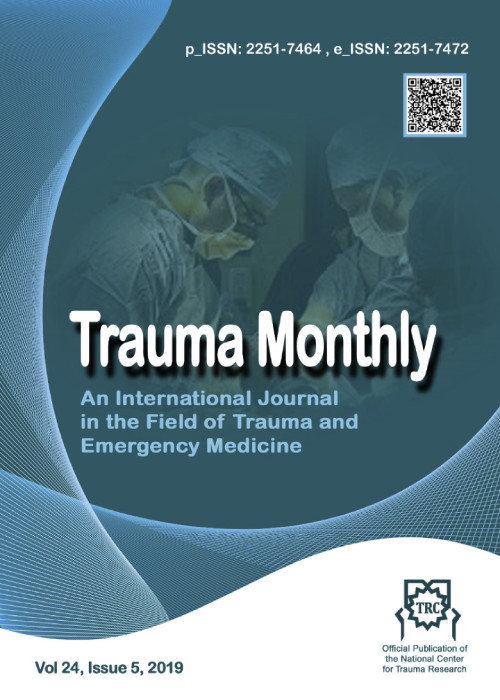Determination of Anatomical Sacral Dysmorphism Criteria based on CT scan Findings for Iliosacral Screw Fixation in a Sample of Iranian Population without Pelvic Ring Fracture
Author(s):
Article Type:
Research/Original Article (دارای رتبه معتبر)
Abstract:
Background
The pelvic ring, sacral fractures and sacroiliac dislocations are managed with different methods. The preferred treatment in sacral fractures or SIjoint dislocations is iliosacral screw fixation. The upper sacral segment dysplasia increases the risk of perforation of the osseous cortex during Iliosacral fixation with a screw. The dysmorphic sacra have a narrow and angular osseous corridor. Objectives
To date, no study has been conducted on the sacral dysmorphism and quantitative and qualitative criteria for fixation with iliosacral screw in sacral dysmorphism among the Iranian population. Methods
We analyzed 100 CT scan and Outlet CT reformation forms of traumatic patients without pelvic trauma to determine 5 qualitative criteria of sacral dysmorphism (i.e., mammillary bodies, misshapen sacral foramen, upper sacral segment not recessed in the pelvis, residual disc between S1 and S2 vertebra and acute alar slope). Upper sacral surface area and angulation were determined based on the CT scan reformatted. Results
Five qualitative criteria from the 3D pelvic CT outlet view and sixth characteristic (tongue-in-groove) from the axial pelvic CT section were obtained by an orthopedic surgeon. Coronal reconstruction was used to divide the patients into dysmorphic and non-dysmorphic groups by drawing a line along the axis of the osseous corridor from one side of iliosacral to its other side. The results showed that 37% of the patients were in the dysmorphic group and 63% in non-dysmorphic. Qualitative criteria were in the range 24% -71% in the dysmorphic group and 14%-34% in the non-dysmorphic group. The sacral dysmorphism score was calculated in all patients. The sacral dysmorphism score = (first sacral segment coronal angle) + 2(first sacral segment axial angle). The obtained mean angle in the dysmorphic and non-dysmorphic group was 84° and 72°, respectively. As the score increased, the safety of the osseous corridor decreased. The dysmorphic score ranged between 70 and 84 in one-third of the patients and none of them was less than 70°. Conclusion
In this study, sacral dysmorphism was detected in 37% of the patients. Axial angulation and coronal angulation were the most important quantitative criteria for determining the sacral dysmorphism. Detecting sacral dysmorphism can be useful for preoperative planning of iliosacral screw placement.Keywords:
Language:
English
Published:
Trauma Monthly, Volume:25 Issue: 4, Jul-Aug 2020
Pages:
153 to 159
magiran.com/p2190382
دانلود و مطالعه متن این مقاله با یکی از روشهای زیر امکان پذیر است:
اشتراک شخصی
با عضویت و پرداخت آنلاین حق اشتراک یکساله به مبلغ 1,390,000ريال میتوانید 70 عنوان مطلب دانلود کنید!
اشتراک سازمانی
به کتابخانه دانشگاه یا محل کار خود پیشنهاد کنید تا اشتراک سازمانی این پایگاه را برای دسترسی نامحدود همه کاربران به متن مطالب تهیه نمایند!
توجه!
- حق عضویت دریافتی صرف حمایت از نشریات عضو و نگهداری، تکمیل و توسعه مگیران میشود.
- پرداخت حق اشتراک و دانلود مقالات اجازه بازنشر آن در سایر رسانههای چاپی و دیجیتال را به کاربر نمیدهد.
In order to view content subscription is required
Personal subscription
Subscribe magiran.com for 70 € euros via PayPal and download 70 articles during a year.
Organization subscription
Please contact us to subscribe your university or library for unlimited access!


